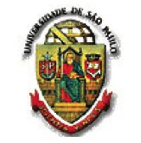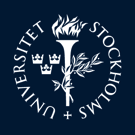2015 Summer Course
Course on atmospheric aerosols and clouds with introduction to process oriented modeling
Universidade de São Paulo & Universitet Stockholms
16 – 27 March 2015




Venue:
Department of Physics, University of Sao Paulo, Brazil
Rua do Matão, Travessa R, 187
05508-090 São Paulo – SP
The course will take place on room 105, Ed. Basílio Jafet. This is the same building where prof. Paulo and Henrique have their office. To get there, see these instructions:
- Maps and instructions to get to Henrique's and Paulo's offices: Download Map
- On this map of the campus, the physics institute is #27: http://www.usp.br/mapas/mapas/pdf/cidadeuniversitaria.pdf
Hotel tips: Download Hotel Tips PDF
Scope:
The scope of the course is on atmospheric aerosols and clouds with special focus on tropics and Amazonia. Participants on the course will use aerosol analysis and modeling tools based on the CALM aerosol process based model (Tuved et al, Atmos. Chem. Phys., 10, 10161–10185, 2010). The tools will be applied on real observational data from wider Amazon Basin. The main goal is to focus on understanding the major physical, chemical and optical processes, together with transport in the atmosphere, controlling aerosol properties and distribution in the atmosphere.
The course includes:
- Lectures given by lecturers from University of Sao Paulo, Stockholm University and Lund University.
- Introduction to aerosol dynamics and chemistry process based models
- Introduction to cloud model
- Practical part involving data analysis of the observations from Amazonia and use of the aerosol process based modeling tools
Lecturers:
- Prof. Paulo Artaxo
- Dr. Henrique Barbosa
- Dr. Luciana Rizzo (Uni. Sao Paulo)
- Vaughan Phillips (Lund),
- Dr. Peter Tunved,
- Prof. HC-Hansson,
- Dr. Radovan Krejci
Requirements:
Needed: Access and prior knowledge of Matlab is advantage, but not requirement. Each participant needs own computer. For those who cannot bring it with them, access to computer will be provided on site. Data analysis software to process the modelling tools output is free of choice, but should be able to read in ASCII files.
Work plan:
Lectures
- Welcome and course intro: P. Artaxo & R. Krejci + course lecturers
- L0: Aerosols and Climate - Course intro (Artaxo)
- L1 and L2: Aerosol microphysics and dynamics (P. Tunved)
- L3: Cloud microphysics and properties (V. Phillips)
- L4: Cloud microphysics and properties (V. Phillips)
- L5: Introduction to cloud modelling (V. Phillips)
- L6: Introduction to cloud modelling (V. Phillips)
- L7 Introduction to cloud modelling (V. Phillips)
- L8 Introduction to cloud modelling (V. Phillips)
- L9 and L10: Aerosol-cloud interactions (R. Krejci)
- L11: Aerosols and climate (Hansson)
- L12: Atmospheric aerosols in Amazonia (Rizzo)
- L13: Aerosols and clouds over Amazonia (Barbosa)
- L14: Role of Amazonia in Earth climate (Artaxo)
Practical exercises
- M1: Model introduction
- M2: Model introduction
- M3: Data sets introduction, division into groups
- M4: Data sets introduction, division into groups
- M6 – M11 group work
- M12: Groups work short presentations
- M13 – M20 – group work
- M21-22: final presentations and course summary
| WEEK 1 | 16/3 | 17/3 | 18/3 | 19/3 | 20/3 |
|---|---|---|---|---|---|
| Mon | Tue | Wed | Thu | Fri | |
| 09:00-10:15 | L1 | L3 | L5 | L7 | |
| 10:45 – 12:00 | Arrival | L2 | L4 | L6 | L8 |
| Lunch | Lunch | Lunch | Lunch | Lunch | |
| 14:00 – 15:15 | Wellcome | M1 | M3 | M5 | M7 |
| 15:45 – 17:00 | L11 | M2 | M4 | M6 | M8 |
| WEEK 2 | 23/3 | 24/3 | 25/3 | 26/3 | 27/3 |
|---|---|---|---|---|---|
| Mon | Tue | Wed | Thu | Fri | |
| 09:00 – 10:15 | L9 | L12 | L14.1 | M15 | M19 |
| 10:45 – 12:00 | L10 | L13 | L14.2 | M16 | M20 |
| Lunch | Lunch | Lunch | Lunch | Lunch | |
| 14:00 – 15:15 | M9 | M11 | M13 | M17 | M21 |
| 15:45 – 17:00 | M10 | M12 | M14 | M28 | M22 |
Themes for Modelling Exercises
Students will be divided into 3 - 4 groups depending on how many are present. The exercises will involve basic data processing and then testing several hypothesis/processes using set of modeling routines that can be combined together as building blocks.
Proposed themes for exercises are based on use of real data obtained during GoAmazon2014/15, but students are encouraged to bring their own datasets (see themes below). Specific scientific questions will be posed and evaluated using the modeling tools, guiding the students in their work. The five themes that will be developed are:
- Evolution of aerosol size distribution of Manaus plume and assessing the importance or coagulation, condensation, dispersion and removal processes. For this part data from T2 and T3 sites provide the basis.
- Why is the aerosol size distribution in remote areas so stable? Here we thought of students to use data from T0 (ATTO) and test different processes forming aerosol size distribution over the rainforest (coagulation, condensation, removal, changing emission gas phase precursors).
- How do aerosols change clouds? here we propose to use data from T0 (clean) and T2 or T3 (polluted) and let students explore how different conditions and aerosol loading change the aerosol activation and resulting cloud microphysical properties. Besides different aerosol they can also test what more/less water vapor will do, etc.
- Why we do not see new particle formation over rainforest? The nucleation routines from Peter's model will be used together with real conditions (T0 site for example) to test by varying thermodynamic conditions (p, T, RH, solar insulation) and available gaseous precursors if a treshold, where model allows occurence of nucleation as we know it from other parts of the world.
- What is the direct radiative forcing of clean and polluted aerosol over Amazonas? Using aerosol optical data from T0, ZF2, T2 and T3 use the aerosol optical properties model routines to assess the direct radiative
Download Files
The course files are located on our FTP server: http://lfa.if.usp.br/ftp/public/2015SummerCourse/
Matlab runtime libraries (for those who don't have full matlab installed)
Matlab aerosol routines
- Peter's aerosol dynamics (8.5Mb)
- Peter's radiative transfer with SBDART (111Mb)
- Peter's GUI executable (3.5Mb)
- Excel sheet for fitting lognormal distribution
Sample datasets
- Sample GoAmazon data, site T0a - ATTO (24Mb)
- Sample GoAmazon data, site T0z - ZF2 TT34 (30Mb)
- Sample GoAmazon data, site T2 - Tiwa (24Mb)
- Sample GoAmazon data, site T3 - Manacapuru (21Mb)
